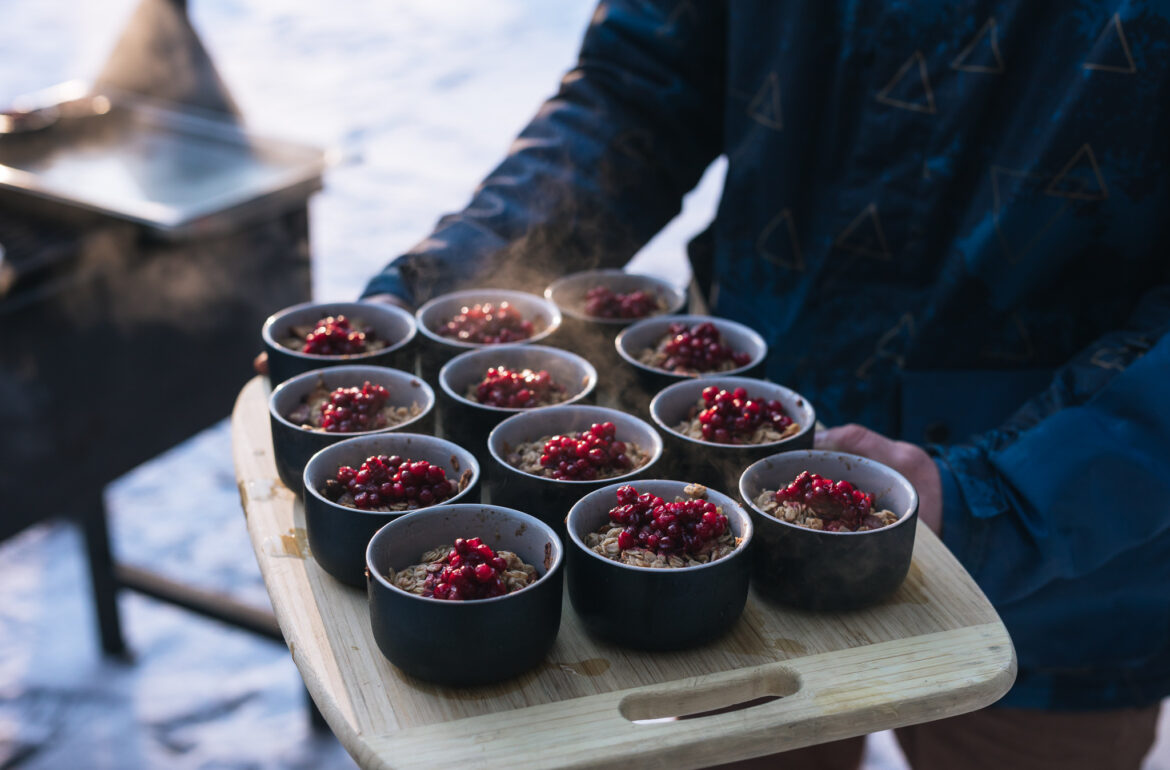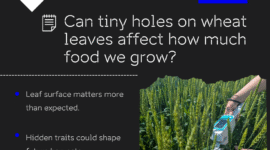A sustainable food production expert Rajeev Bhat came from Asia to solve Estonia’s food problem by tapping into surprising resources.
Imagine throwing away every third meal. Or leaving a third of tomatoes in the greenhouse to rot. It would be quite an unreasonable waste of time, water and other resources. That’s the reality on a global scale though. Around one third of food that is produced for human consumption is wasted or lost around the world, according to an estimation by the Food and Agriculture Organization of the United Nations. At the same time, one out of nine people suffer from chronic hunger and the need for urgent action is rising because of economic shocks, weather extremes and conflicts, according to the 2020 Global Report on Food Crises. The coronavirus pandemic is expected to even aggravate famines.
No other global problem is as absurd – but also as solvable! – as this.
What’s stopping us from fixing the food waste issue?
Seeing the problems farmers were facing
Bioscientist and Professor, Rajeev Bhat, with more than 20 years of experience in the field of agri-food technology has a good overview of what is going on in Asia, Pacific regions and Europe.
He grew up in the south west of India. “I saw a lot of farm produce being wasted before it would even reach the consumers,” he said. The farmers in his home region didn’t have direct contact with the market, but depended on the middlemen, who made most of the profit. Because of bad management and poor infrastructure, farmers ended up suffering losses. This is the case in most of the countries all over Asia and Asia-Pacific regions, Bhat said. He wanted to help the local farmers and ended up doing his PhD in food processing (safety and nutrition) in India.

Bhat then worked on and studied food related issues like food toxicology, sustainable food production, food security and agri-food waste management in South Korea, Malaysia, Germany and the Fiji Islands, before landing in Estonia in early 2019. This wide range of experiences showed Bhat that a multidisciplinary approach is the best option for solving the food waste and food loss problems.

Bhat’s international team of researchers working under VALORTECH at the Estonian University of Life Sciences are now trying to find different applications that can minimise the agri-food wastes and by-products. The project is funded with 2.5 million euros under the European Research Area (ERA) Chair action, which was created by the European Commission to bring structural changes to universities and research institutions in the “widening” EU countries like Estonia. Coming from various countries like Ireland, Pakistan, India, Tunisia, Croatia, Hong Kong and Estonia, VALORTECH’s scientists have many ambitious goals to achieve in the next three years. Now that the team is finally assembled, the work has only started.
They look into turning vegetable and fruit wastes – like peels or pomace – into bioplastics. They try to isolate pigments from the plant wastes and convert into natural food colours. They study whether “unnecessary” and wild plants can be used in food and pharmaceutics as they can have antimicrobial, anticancer and antioxidant properties. Mushrooms, for instance, produce vitamin D – why not use them as a natural source of the sunshine vitamin during those long and dark Nordic winters? The team also develops foods and livestock feed and the long list continues.
This is the first top-level research team of this kind in Estonia that is specifically created to solve the local food waste issues.
With his team members, Bhat is also developing a curriculum for the future scientists in Estonia.
Freedom inspires to do more
Even though the goals are ambitious, Bhat said it doesn’t overwhelm him. “Estonia has given me and my team a lot of freedom. That’s not what I have experienced in any other country. It inspires me to do more!” he said.
Bhat’s background made him a great candidate. “Plant-based raw material is studied more in Asia where they have a good knowledge base,” said Piia Pääso – one of the coordinators of the project.

“I am honoured to work with Rajeev,” said Alice Aav, Bhat’s team member and sustainable food production research fellow. “We know a lot about milk and meat in Estonia, but Asian scientists are well informed about plant-based produce. It’s a wonderful opportunity for us.”
In the working group, Aav is looking into how to use potato peels. Extracts from potato peels could enrich other food products like meat with natural antioxidants and in many cases make their shelf-life longer. These extracts could also be used in medicine. Artificial preservatives can be harmful to health, Aav explained.
With many other alternatives like rice and pasta pushing to the market, Estonian potato farmers are barely making their ends meet. Aav would like to increase the value of each potato, hoping it would help the farmers too.
“Sustainability and zero waste conceptions seem natural to my generation and the younger ones, but not so obvious to the older one,” said Aav, who is in her thirties. The other challenge will be bringing in farmers to collaborate with them. The gained knowledge should be applied to practice, otherwise the whole effort becomes meaningless.

In Bhat’s view, there are clear economic benefits to more sustainable farming. The food growers need to be presented with the gains instead of telling them that reducing waste is good for the planet. There can be real economic benefits to green agriculture. At the end of the day, farmers in Estonia, just like the ones in Bhat’s home region, are interested in keeping their farms going.
Food issue is a survival issue
Food issues are in focus in the EU at the moment, and for a reason. It is a survival issue. Zero waste doesn’t only mean saying no to CO2 emissions and plastic bags. It also means using food more consciously and reusing the waste.
As more scientists around the world are coming together to share knowledge from different fields in order to solve the food waste and loss issues, the consumers can also do their part by making more conscious choices in supermarkets.
Written by: Marian Männi
This article was funded by the European Regional Development Fund through Estonian Research Council.
 Back
Back



